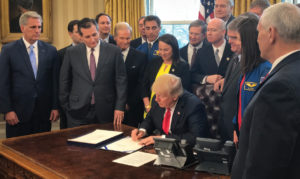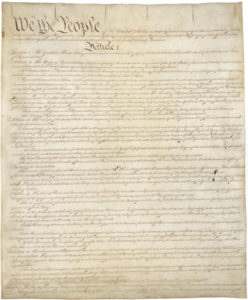
AMP | Kids is proud to partner with The Mini Page, celebrating over 50 years of providing engaging and fun learning opportunities to young readers across the country. This feature was originally syndicated in newspapers the week of May 9 – May 15, 2020. It is distributed digitally here with permission from Andrews McMeel Syndication. Enjoy and share with the young learners in your life!
In the last issue of this series, we learned about separation of powers. We learned that the founders created three branches of government.
The Constitution gives each branch the power to do different things.
Listed powers
Some of the powers are listed or expressed, or enumerated (e-NOOM-erate-ed).
Suggested powers
Some legislative powers are from a part of the Constitution that says that Congress shall make all laws that are “necessary and proper” for carrying out the powers granted by the Constitution. This is called the “elastic clause,” or part, because it stretches the powers of Congress.
Common powers
There are a few powers that most governments in the world have, so the United States has them too. For example, our national government can make citizens of foreign nations leave the country.
Article I
Article I deals with the legislative branch. This is the branch of our government where laws are made.
Let’s study how a bill becomes a law.

President Trump signs the NASA Transition Authorization Act of 2017 in the Oval Office.
1. Proposal: A bill is proposed in either the House or the Senate and sent to a committee to handle the subject.
2. Committee action: Since so many bills are proposed, the committee chooses only a few for further study.
3. Debates held: The House and the Senate discuss the bill, change (or amend) it, vote on it, and either pass or reject it.
4. Conference committee agrees: If there is a difference between the bill presented to the House of Representatives and one passed by the Senate, a conference committee works on the differences.
5. Full vote: The conference report, or rewritten bill, is sent back to the House and the Senate for a “yes” or “no” vote by members.
6. President signs: The bill is sent to the president for signing. If he vetoes (doesn’t sign) it, it is sent back to the House and Senate. If it passes again after the veto, with a two-thirds vote in each house, it becomes a law.

The first law
The very first act of Congress, signed into law by President George Washington on June 1, 1789, was “An Act to regulate the Time and Manner of administrating certain Oaths.”
The new law required that all members of Congress, all federal officials, all members of state legislatures, judiciaries (court officials) and executives take the simple 14-word oath above.
Officials still take an oath to support the Constitution today.
Resources:
On the Web:
National Archives: America’s Founding Documents
At the Library:
What is the Constitution? by Patricia Brennan Demuth
Teachers: For standards-based activities to accompany this feature, visit Andrews McMeel Syndication. And follow The Mini Page on Facebook!
